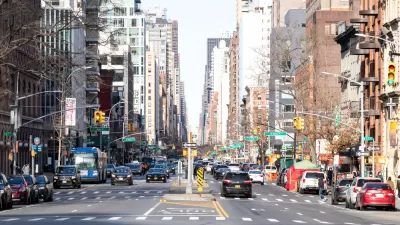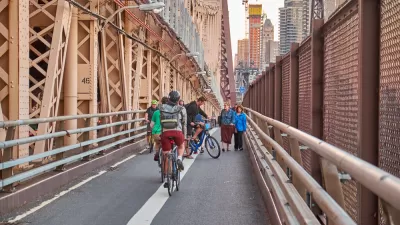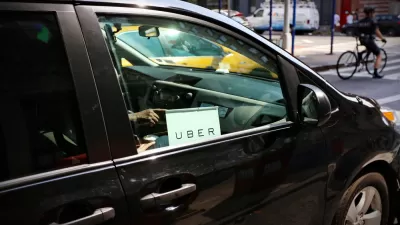New data from New York's Transportation Department shows that although miles of Manhattan street space have been turned over to bikes and pedestrians since 2008, average traffic speeds have actually increased, despite a consistent volume of vehicles.
Something funny has happened south of 60th Street in Manhattan, where new bike lanes and pedestrian plazas have popped up in recent years. New data shows that Mayor Bloomberg's "war on cars" has actually been a boon to traffic flow, benefiting the city's many modes of transportation.
"Citing GPS data from the city’s yellow cabs, the Bloomberg administration said that average traffic speeds in Manhattan’s primary central business district, south of 60th Street, had increased nearly 7 percent since 2008," reports Matt Flegenheimer.
“We’re not, despite our reputation, trying to take from one and give to the other,” Bruce Schaller, the department’s deputy commissioner for traffic and planning, said. “It isn’t a zero-sum game.”
Not all are convinced of the benevolent impact of expanding bike and pedestrian infrastructure, however. "Christopher McBride, a transportation specialist with AAA New York, noted that while traffic volumes had been fairly consistent in recent years, they had decreased significantly compared with 10 to 15 years ago, suggesting that some commuters had simply given up on Midtown driving in the Bloomberg years," notes Flegenheimer.
“It is more of a hassle now than ever to drive into the central business district,” he said. “Some of these changes that have occurred, they’re more intimidating for drivers. And a lot of parking has been eliminated.”
FULL STORY: In Bloomberg’s City of Bike Lanes, Data Show, Cabs Gain a Little Speed

Alabama: Trump Terminates Settlements for Black Communities Harmed By Raw Sewage
Trump deemed the landmark civil rights agreement “illegal DEI and environmental justice policy.”

Study: Maui’s Plan to Convert Vacation Rentals to Long-Term Housing Could Cause Nearly $1 Billion Economic Loss
The plan would reduce visitor accommodation by 25% resulting in 1,900 jobs lost.

Planetizen Federal Action Tracker
A weekly monitor of how Trump’s orders and actions are impacting planners and planning in America.

Wind Energy on the Rise Despite Federal Policy Reversal
The Trump administration is revoking federal support for renewable energy, but demand for new projects continues unabated.

Passengers Flock to Caltrain After Electrification
The new electric trains are running faster and more reliably, leading to strong ridership growth on the Bay Area rail system.

Texas Churches Rally Behind ‘Yes in God’s Back Yard’ Legislation
Religious leaders want the state to reduce zoning regulations to streamline leasing church-owned land to housing developers.
Urban Design for Planners 1: Software Tools
This six-course series explores essential urban design concepts using open source software and equips planners with the tools they need to participate fully in the urban design process.
Planning for Universal Design
Learn the tools for implementing Universal Design in planning regulations.
Caltrans
Smith Gee Studio
Institute for Housing and Urban Development Studies (IHS)
City of Grandview
Harvard GSD Executive Education
Toledo-Lucas County Plan Commissions
Salt Lake City
NYU Wagner Graduate School of Public Service





























